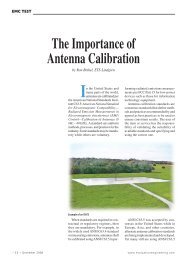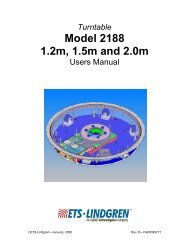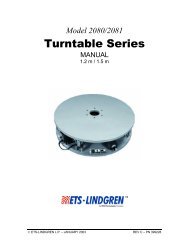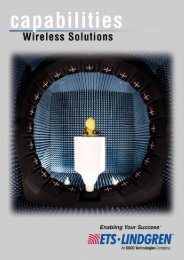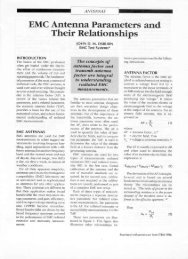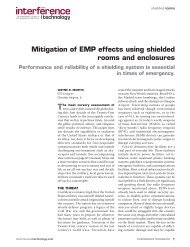Create successful ePaper yourself
Turn your PDF publications into a flip-book with our unique Google optimized e-Paper software.
HIn3637 <strong>Manual</strong> Page — 31<br />
APPENDIX A<br />
VIDEO DISPLAY TERMINALS (VDTs)<br />
VDT CHARACTERISTICS<br />
General Description<br />
Video display terminals (VDT's) and television receivers<br />
are quite similar in certain respects. Both are used to<br />
display information; the VDT displaying information<br />
received from a computer system, word processing<br />
system, or other digital information system and the<br />
television receiver displaying video information<br />
transmitted from television broadcast stations. In<br />
conjunction with a keyboard, the VDT serves as the main<br />
interface between the operator and a word processor,<br />
computer, etc. Television receivers are sometimes used<br />
in lieu of VDT's with home computer systems.<br />
Principles of Operation<br />
VDT's and television receivers use the same basic<br />
principles of operation. Both contain a large evacuated<br />
glass tube called a cathode-ray tube (CRT), or picture<br />
tube in the case of television receivers. The CRT<br />
contains a source of electrons (the cathode) at one end<br />
and a fluorescent coating on the inside of the viewing<br />
screen. Electrons released from the cathode are<br />
accelerated by a high voltage (typically in the range of 10<br />
to 25 kilovolts) and are projected onto the fluorescent<br />
material of the screen which then emits visible light when<br />
it is struck by the fast-moving electrons. The CRT also<br />
includes various electrodes for focusing the electron<br />
beam and for scanning the beam across the fluorescent<br />
screen. Electronic circuitry in the VDT modulates the<br />
electron beam to produce the intended images on the<br />
screen. This circuitry leads to the production of<br />
electromagnetic fields (emissions). There are four basic<br />
aspects to the electrical environment of VDT emissions:<br />
(1) 60/50 Hz modulated DC fields; (2) 60/50 Hz fields;<br />
(3) RF fields associated with the horizontal and vertical<br />
deflection systems; (4) broadband RF fields caused by the<br />
digital electronic circuits which are associated with<br />
character generation (Roy, et al, 1983).






